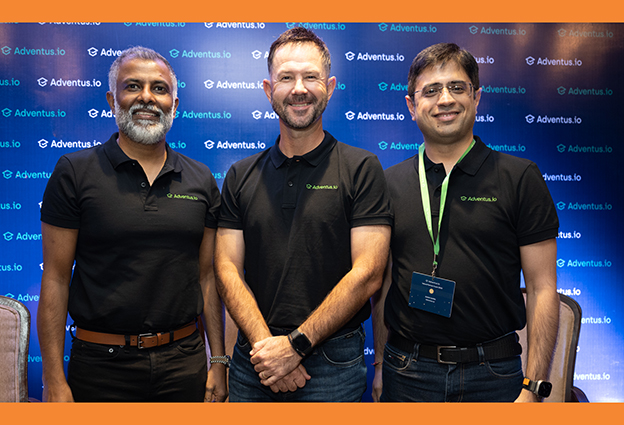The Federation of Indian Chambers of Commerce and Industry (FICCI), jointly with AmpIn Energy Transition, organized an interactive session on Renewable Energy Transition for Commercial and Industrial Consumers to showcase renewable energy solutions and technologies available for Indian industrial consumers, supporting their transition towards decarbonization and the net-zero journey.
Mr. Pinaki Bhattacharyya, Senior Member of FICCI Renewable Energy CEOs Council and Managing Director & CEO of AmpIn Energy Transition, in his welcome address, said, “The eastern region is poised for an energy transition, offering industries potential savings of 20-30% by adopting renewable energy. The declining costs of renewable energy make it imperative for industries not to delay the shift. Renewable energy providers should adopt a long-term vision, recognizing the availability of funding from international investors and the equity market’s interest in the sector. Collaboration between industry, solution providers, the financial sector, and government at both central and state levels is crucial for a successful transition”.

Presenting the trends of adopting renewable energy (RE) solutions by commercial and industrial consumers, Mr. Anish Mandal, partner at Deloitte India, highlighted how India has to achieve its net-zero goals. “India is performing admirably compared to the global scenario in renewable energy generation, experiencing an annual growth rate of 6-7%. Almost half of the demand stems from the commercial and industrial (C&I) sector, which has established its decarbonization objectives and attracted substantial investments. Additionally, both the Centre and state governments have introduced a range of initiatives to support and further this progress.”
While addressing the seminar, Mr. Debasish Banerjee, Managing Director, CESC Ltd, said, “Affordability is of utmost importance, and the storage costs are very high, and It’s time for battery costs to come down. A balanced approach to energy affordability, security, and transition is essential. Once storage costs decrease, stored renewable energy can be an effective backup, especially during peak seasons. This summer, peak demand within our jurisdiction rose by 25-30%, reaching temperatures of 52-53 degrees Celsius. The total renewable energy capacity in the eastern states is approximately 80 GW, and efforts should be made to increase this capacity.”

Mr. Anil Razdan, Former Secretary of the Ministry of Power, Government of India, stated, “The transition has been gradual, but the prospects are promising. Imperatives like global warming and rising sea levels compel us to embrace renewable energy solutions. Energy efficiency is a necessity, demanding a reduction in consumption. Our aspirations, mindsets, and lifestyles must undergo change. Collaborative efforts are needed to create pump storage facilities, tapping into every source of renewable energy, be it tidal power or electricity generation from river water.”
Mr. Ajay Kumar Pandey, Director (Regulatory & Trading), West Bengal State Electricity Distribution Company, Government of West Bengal, said, “In West Bengal, we have been taking many steps; one of the oldest running hydro plants in Asia is situated here. Since 2007, we have had a fully operational 900 MW pump storage in Purulia, and plans are underway for four additional pump storages of similar capacity in the same location. Government clearance has already been obtained for a 500 MW floating solar unit. The primary challenges lie in mindset and commercial aspects, which must be addressed and overcome.”

Mr. Hemant Sharma, Principal Secretary, Industries Department, Government of Odisha, in his virtual address, spoke, “Energy efficiency and conservation are crucial, and it’s essential to encourage Commercial and Industrial (C&I) consumers to procure renewable energy from distributors through effective regulatory mechanisms, a practice already underway in Odisha. Assistance should be extended to industries with captive power plants, facilitating their transition to renewable energy despite the associated investments. In Odisha, we offer incentives to industries transitioning to renewable energy and actively encourage renewable energy solution providers to invest in the region, including setting up necessary plants.”
Mr. Hemant Verma, Chairman of Chhattisgarh State Electricity Regulatory Commission, said in his virtual address, “Transitioning to renewable energy is now a necessity, not an option, with significant potential in the eastern region. The Government of Chhattisgarh is offering incentives for both industries to shift to renewable energy and solution providers to establish plants in the state. A collaborative approach is deemed the most effective way forward.”
Mr Lalit Bohra, Joint Secretary, Ministry of New and Renewable Energy, Government of India, highlighted steps the Centre took to encourage C&I to go in for the transition. “India is a prominent player in the renewable energy market, holding the fourth position in installed capacity. The government actively promotes renewable energy, encouraging Commercial and Industrial (C&I) consumers to adopt it. Viability gap funding for energy storage has been introduced to facilitate the integration of large amounts of renewable energy into the grid. A significant milestone occurred with the notification of Green Open Access Rules 2022, enabling industries to transition to net zero. The Ministry of New and Renewable Energy (MNRE) is seeking recommendations from both generators and consumers to accelerate the decarbonization journey further.
The first panel discussion on “Implementation of Green Open Access in the Eastern States” highlighted the interventions and conducive policy support provided by States that have taken the lead in paving the way for Energy Transition. The panel discussion in round one emphasized implementing green open access in the eastern states. The discussion touched upon Renewable Energy policies, potential in states for RE Transition, Ease of doing business & cost of operations in the state, Infrastructure Development, and Virtual Metering and financing of Rooftops.
The second-panel discussion is on the policy environment of states to support RE transition in the Eastern Region, enabling policy framework, state infrastructure, investment potential, and support provided by state governments to support renewable energy development in the states. The role of renewable energy in industries is multifaceted and can significantly impact the industry and vision for sustainability, decarbonization, cost competitiveness and environmental goals. As this sector plays a critical role in RE transition, the Viability of scaling up energy transition in states, and Takeaways from RE-rich states, it can play an essential part in enabling the structural shift to clean energy.
The third-panel discussion acknowledged the key building blocks needed for decarbonizing the electricity sector and developing a roadmap for a 100% renewable energy transition, which shall commit to adopting green energy and look for solutions best suited to their operations.
The final discussion highlighted the significance of the Strategic Initiatives in the Eastern Region- Green Hydrogen, Manufacturing, Energy Storage and Floating Solar enabling the building of a robust ecosystem of derivatives- Solar manufacturing, BESS, Floating Solar and hydrogen in the country. This shall help in formulating the Policy support and incentives required to scale up domestic manufacturing and Ecosystem development and tackling the major challenge of Captive GH2 billing in customer network along with the market development considering Incentives for Industry to purchase much costlier GH2 for betterment in Incentivization for domestic production & exports. Such FICCI platforms facilitate this interaction between the two sectors of renewable energy and industrial consumers.






















































































































































































































































Facebook Comments